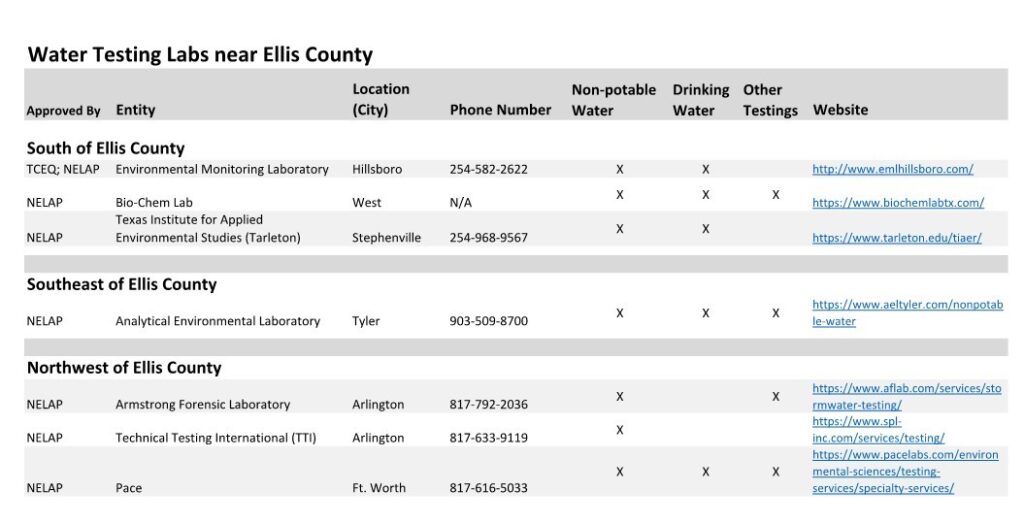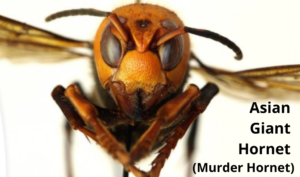Texas A&M AgriLife Extension Service: Soil, Water, and Forage Testing Laboratory
The Texas A&M AgriLife Extension Service Soil, Water, and Forage Testing Laboratory is housed in the Department of Soil and Crop Sciences at Texas A&M University. The laboratory’s primary mission is to provide research-based analysis and non-biased recommendations for agronomic and non-agronomic soil analysis, plant tissue analysis, forage nutritive analysis, and non-drinking water analysis. The laboratory also aids the research and extension communities with analysis needs. We also work closely with several Texas A&M University service laboratories, other state agency laboratories, and private laboratories with method development, troubleshooting, and quality assurance/quality control issues, as well as, forwarding clientele to ensure their needs are met.
 Click the links below to print the required form when submitting a soil, water, and/or forage sample to the Texas A&M AgriLife Extension Service testing laboratory. Our Ellis County AgriLife Extension Service office offers complimentary soil sample bags. Please feel free to stop by during business hours to obtain the bags.
Click the links below to print the required form when submitting a soil, water, and/or forage sample to the Texas A&M AgriLife Extension Service testing laboratory. Our Ellis County AgriLife Extension Service office offers complimentary soil sample bags. Please feel free to stop by during business hours to obtain the bags.
You can access all the Testing Laboratory forms by Clicking Here
CLICK HERE to be directed to the Soil, Water, and Forage Testing website.
If you prefer to explore other 3rd party laboratories near Ellis County, CLICK HERE for a list.
Asian Lady Beetles Are a Nuisance
It is that time of year when Asian Lady Beetles make an appearance indoors, and usually in large numbers.
While they can be a major nuisance, they shouldn’t cause panic and some simple exclusion practices can help prevent this issue in the future.
Asian Lady Beetles are not native to Texas – they were introduced from Asia to the United States in the 1960s and 1990s as a UDSA project to help reduce agricultural pests in several Southern and Eastern States from Louisiana to Connecticut.
They are now found throughout the United States either from natural spread or from further introductions into the United States from Japan on freighters.
Asian Lady Beetles are true lady beetle, better known as a ladybug. They are wonderful biological control agents of pests such as aphids in nature and during warmer months, help control those pests in our landscape.
During colder, winter months, they have a trait that makes them different from other ladybugs – their propensity to find harborage in protected spaces, which often is our warm home.
One way to tell the difference between Asian Lady Beetles and other species is that these guys have a marking behind their head that looks like an M.
Asian Lady Beetles tend to be attracted to light or lit surfaces and will congregate in mass numbers on sunny, Southwest sides of buildings. Especially those structures that are lighter in coloration, but really any surface will do as long as it is warmed by the afternoon sun.
They will soon find cracks and crevices to squeeze through and oftentimes get into eaves of homes, attics, or directly indoors.
When we have these up-and-down temperatures in winter, typical of Texas, they will become active on the warmer days and are noticeable inside the home, clustering and flying around windows, door frames, or lights.
The good news is that Asian Lady Beetles are not harmful to humans or pets. Even when consumed, they are not known to be toxic.
But what they will do is leave a yellow stain on walls and surfaces, emit a musty odor, and just be a plain nuisance. You may love ladybugs outside in your garden, but who wants them indoors?
How do you get rid of them? Prevention is key, but it’s oftentimes thought of too late. Seal up around cracks and crevices along windows and eaves, use screens on vents and large holes, and replace weather stripping that is worn around door frames.
For those already inside, vacuum them up! Throw them back outside and let them do their thing in nature.
Pesticide treatments are not always effective.
In some cultures, Ladybugs are considered a sign of luck. For more information on this or any other agricultural topic please contact the Ellis County Extension Office at 972-825-5175 or email Mark Arnold at wmarnold@tamu.edu.
New Guinea Flat Worm Confirmed in Midlothian
We wanted to make you aware that a homeowner in Midlothian reached out for help identifying a strange worm she found in her garden. We reached out to the Texas Invasive Species Institute, as Texas A&M has nothing on these predatory worms yet. Dr. Matthew McClure is who I spoke with, and he informed me of the below:
Unfortunately, once they’ve been established there is no reliable way of getting rid of them. They are known to spread via soil transport (landscaping, potted plants, etc.) and can also be spread from property to property through flash flooding (that’s how they ended up in my yard). The main threat is to biodiversity because they can decimate populations of native snails and other invertebrates. The worms are not parasitic, but the threat to people is that they have the potential to carry nematode parasites such as rat lungworms (Angiostrongylus). For that reason, it is recommended not to handle the worms barehanded and to wash hands after encountering them. I usually collect them by lifting them with a toothpick or small stick and placing them into a zip lock bag, freezing the bag to kill them, and disposing of the bag.
As far as management, this is from the website, and this also applies to hammerhead flatworms as well:
“Flatworms are thought to be susceptible to citrus oil and white vinegar mixtures to spray onto them directly. The normal strength calls for 2 ounces of citrus oil to 1 gallon of white vinegar. Spray that mixture directly on any flatworms, making sure you’ve sprayed the whole creature. This soft-bodied worm could be susceptible to salt, or slug repellent. When purchasing slug repellent please be sure to buy the kind that is not harmful to domestic animals like dogs and cats; by making sure the repellent is made with “Iron Phosphate” and NOT “Metaldehyde”.”
http://www.tsusinvasives.org/home/database/platydemus-manokwari
OUTBREAK OF HESSIAN FLY IN CENTRAL TEXAS: WHEAT AND MANAGEMENT DECISIONS
Hessian Fly are appearing to be a widespread issue in portions of the Texas Blacklands this year. The Hessian Fly is a small fly that during the larval stage can be a significant pest of wheat and some other small grain crops like barley and rye. There are several wild host plant species for the Hessian Fly including quackgrass, western wheatgrass, goatgrass, timothy, and various other wild grasses.
Click Here to read more on the Outbreak of Hessian Fly in Central Texas.
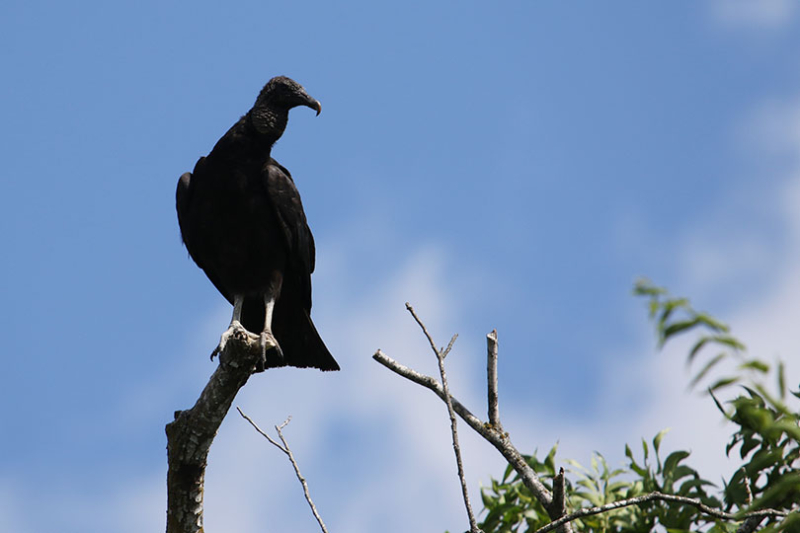
Black vulture depredation permit program in Texas
It’s what ranchers don’t want to see—black vultures circling a pasture, especially when livestock are being born. But it’s becoming a more common occurrence as black vultures expand their range northward due to warmer weather and man-made roosting and nesting structures.
“There are two types of vultures in Texas—the turkey vulture and the black vulture,” Mike Bodenchuk, director of Texas Wildlife Services (TWS), said. “Turkey vultures find their food by their sense of smell, but black vultures find their food through eyesight.”
Black vultures can key in on areas where livestock are having their young.
While they provide an essential ecological service by cleaning up carcasses, they also can kill young livestock.
The problem has only worsened over the years. The growth in numbers and range has led to increased black vulture predation on newborn livestock.
“Twenty, thirty years ago, black vultures were largely found in Texas south of I-10, but they’ve expanded their range considerably up into the South Panhandle and other northern parts of Texas,” Bodenchuk said.
Black vultures have a feeding range of up to 30 miles per day, meaning they will travel far from their nesting area to find a carcass or small animal.
“So, we have a lot more birds. We have them over a lot larger part of the state, and they’re very aggressive in terms of competing with each other for food,” Bodenchuk said. “There’s much more livestock loss today than there was 20 or 30 years ago.”
Black vultures, however, are protected by the Migratory Bird Treaty Act, and livestock producers are limited in how they can keep the birds from attacking their livestock.
To help Texas ranchers who are losing livestock to black vultures, the U.S. Fish and Wildlife Service granted a permit to the Texas Wildlife Damage Management Association (TWDMA) for black vulture management for the lethal removal of up to 750 vultures. TWDMA is a member of the cooperative TWS.
Ranchers can apply for sub-permits through TWS, which would allow them to remove up to five black vultures each during the year.
The depredation sub-permits allow for the lethal removal of a limited number of vultures to reinforce the non-injurious harassment.
“Landowners who want to use non-injurious methods do not need to participate in this program,” Bodenchuk said. “The program is only for those who might need to remove a small number of vultures to reinforce the non-lethal hazing.”
Those methods include auditory and visual dispersal methods like lasers and propane cannons.
“Landowners and ranchers can go out there and chase birds away from their livestock. They can bring their livestock closer to the house, where they can keep an eye on them giving birth,” Bodenchuk said. “Black vultures can be deterred from small pastures with things like effigies, artificial vultures or dead vultures. So that will haze them out of an area for a while. You can use noisemakers, dogs—whatever doesn’t injure the bird.”
He noted TWS also recommends ranchers hang the dead vultures in a nearby tree because vultures don’t like to come near a dead vulture.
“Using a vulture that’s shot as an effigy or using an artificial effigy—a body that looks like a vulture with wings and a head, hung upside down in trees around the pasture—can help keep vultures out of those areas,” Bodenchuk said. “We recommend one effigy to about five acres. So, you couldn’t do this in a large pasture, but it you have a confined area where livestock are giving birth, the effigies are useful as a way of hazing vultures out of the area.”
For more information on black vulture depredation management, call TWS at one of the district offices:
Canyon: 806-651-2880
College Station: 979-599-5070
Corpus Christi: 361-299-1176
Ft. Stockton: 432-360-1122
Ft. Worth: 817-978-3146
Kerrville: 830-896-6535
San Angelo: 325-655-6101
Uvalde: 830-278-4464
Click here for more information on vulture damage management.
Earth-Kind Landscape Conservation Water Practices Save Water, Save Money
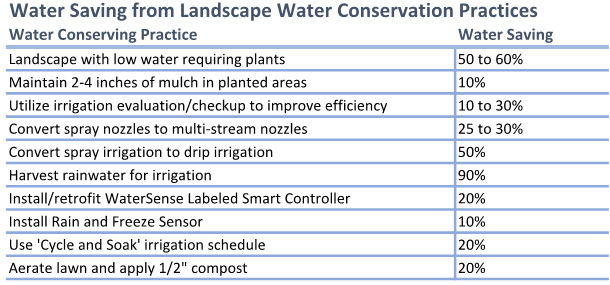
Since landscape irrigation increases water use by 35 to 75% during the summer irrigation season, Texas A&M AgriLife recommends landscape water conservation practices be adapted to reduce water use, save money, and still maintain a beautiful landscape. Water conservation is the easiest and least expensive method to make water resources sustainable for future use.
Design or Redesign landscape to utilize low water requiring plants Water Savings 50%
A water-conserving design with efficient irrigation could reduce water use by up to two-thirds. Replace high water-requiring plants and lawns with native and adapted drought-tolerant varieties. Do not plant new plants or convert your landscape during a drought. Wait until drought conditions and watering restrictions have lifted before making changes to your landscape. Newly planted landscapes require frequent irrigation until the plants are established. Once established water-conserving landscape plants and lawns require infrequent irrigation. In fact, some water-conserving landscapes require irrigation only a few times in July and August. The best time to plant is during the fall, winter, or early spring.
Besides native and adapted plants and a drought-tolerant lawn, a water-conserving landscape has more planted areas. Planted areas absorb rain and irrigation water more efficiently because the soil preparation and mulch in planted beds increase infiltration and percolation rate. Drought tolerant lawn grasses will reduce water requirements, and disease and insect problems. Zoysia, Common Bermuda, Buffalo, and Blue Gamma grasses make beautiful water-conserving lawns. Always check with your county Extension office about the lawn grasses that perform best in your area.
Good instructions for drawing a landscape design can be found at https://aggie-horticulture.tamu.edu/earthkind/planning-the-home-landscape/
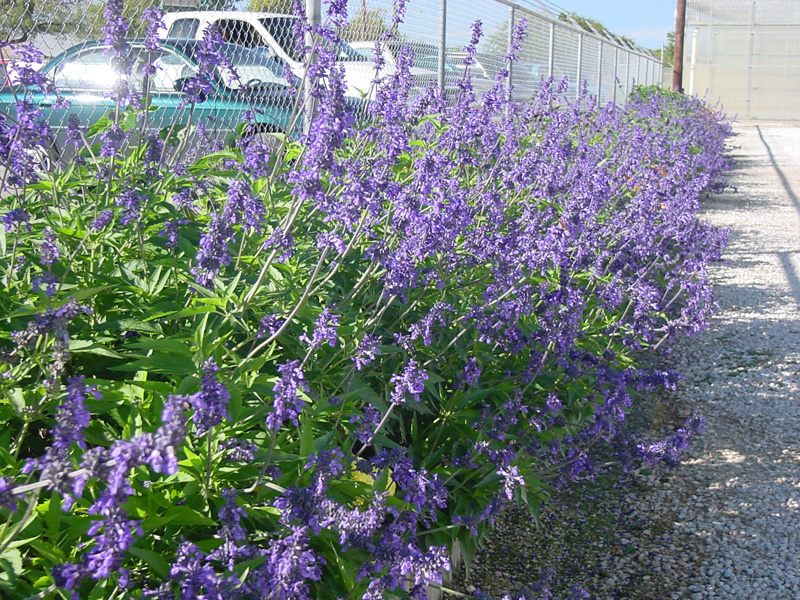
‘Henry Duelberg’ Salvia
Utilize Irrigation Evaluation/Audit to Improve Efficiency 10% up to 30%
Since landscape irrigation increases water use by 35 to 75% during the summer irrigation season, Texas A&M AgriLife recommends landscape water conservation practices be adapted to reduce water use, save money, and still maintain a beautiful landscape. Water conservation is the easiest and least expensive method to make water resources sustainable for future use. Most of the time checking each sprinkler head for proper function and distribution will identify problems before the landscape starts suffering. A major problem with most irrigation systems is poor distribution and maintenance.
Use this checklist to identify and fix problems yourself or call a licensed irrigator:
- Sprinkler head spraying water onto the sidewalk, driveway, or road
- Fix: redirect spray nozzle so water is applied only on the landscape; if spray pattern cannot be redirected, replace the nozzle with a spray pattern that only applies water to the landscape
- Spray nozzle missing, not operating, or reduced water flow.
- Fix: replace nozzle and filter; check nozzle and filter for damage or blockage
- Poor distribution pattern
- Fix: check the nozzle for damage or blockage; replace the nozzle with proper patter; increase or decrease throw by turning the screw on top of the nozzle. Tighten the screw to decrease the throw or loosen the screw to lengthen the throw.
- Sprinkler head bubbling or gushing water out the top
- Fix cracked or broken nozzle; replace the nozzle
- Sprinkler head no longer straight up and down
- Fix: reset pipe to the perpendicular; this may require you to loosen the soil around the irrigation head and riser, pull the head perpendicular, and then tamp the soil back in place or re-install tee.
- Sprinkler creates a cloud or mist
- Fix: usually caused by too much pressure; install pressure regulator either at a meter or use pressure regulation heads.
- Grass, shrubbery, or tree blocking distribution pattern
- Fix: raise or lower riser; move sprinkler head
- Dry landscape areas or poor coverage
- Fix: Correct distribution; maintain a mulch layer on all planted beds; aerate and add about ½ inch of compost to lawn area.
- Water bubbling, dripping or gushing all the time
- Fix: broken or leaking pipe or valve
- Runoff occurs before adequate water applied
- Fix: soak and cycle – on your irrigation controller set the station to run for two or three short intervals instead of one long time.
- The area along road, driveway or sidewalk stay too dry
- Fix: correct poor distribution, run this station for several short periods with about 30 minutes in between cycles; aerate and add about ½ inch of compost. The best alternative for this area may be to hand water or utilize soaker hoses.
For further information, contact Mark Arnold, County Extension Agent-Agriculture/Natural Resources, 701 South I-35 E Service Road #3, Waxahachie, or call 972/825-5175 or email: wmarnold@ag.tamu.edu
Manage Pastures to Prevent Prussic Acid Loss of Livestock (December 2020)
Click the link to learn more about preventing prussic acid poisoning in livestock: CLICK HERE to Read More
Livestock for Small Acreage Landowners
By: Richard V. Machen and Robert K. Lyons

Rural areas in Texas are being rapidly developed and urbanized, especially in the central and southwest parts of the state. Many urban dwellers want to escape to the country to live a quiet, peaceful life or enjoy recreational opportunities on their own land. As a result, large tracts in rural areas are being divided into properties of 5 to 100 acres; many are fewer than 20 acres.
Click Here to learn more and read the full article.
How to Evaluate Stocking Rates
Donald J. Dorsett
Associate Professor and Extension Forage Specialist
How do you determine your stocking rate? Is it a
matter of putting 40 head in the pasture and hope
for the best?
✓ determine daily animal requirements
✓ determine potential production
✓ compare production and requirement to determine stocking rate
✓ check pasture periodically for any needed correction
Click Here to read more.
Asian Giant Hornet (Murder Hornet)
News stories have sparked concern about the Asian Giant Hornet (AGH). Here is current information about the AGH and its presence – rather its lack of presence in Texas. Learn more about this insect and its look-a-likes: CLICK HERE
CLICK HERE to learn how the invasive insect could have been introduced in the Pacific Northwest and why its nickname is ‘murder hornet’.
Highly Contagious Rabbit Disease in Texas
RHDV2 was found in Lampasas and Hamilton Counties. This is a highly contagious, deadly virus, affecting domestic and wild rabbits. Per TAHC mandate, all rabbits in the barns were euthanized and the barn must remain empty for 90 days. Because this virus is now in D8 (Hamilton County), here are some of the recommendations that are being put out by the American Rabbit Breeders Association. At this time, the ARBA is asking breeders close to outbreaks to enact strict bio-security measures to reduce the opportunity of their herds contracting this deadly virus. Rabbit breeders are encouraged to not utilize cross-country transport services during this time to contain the outbreak and protect rabbit populations across the continent.
Per ARBA show rules, a sanctioned show “reserved the right to refuse entries from exhibitors placing an entry from all locations within 150 miles which has had a confirmed outbreak of RCV/RHD/VHD within the past 60 days of the entry deadline.” If the virus continues to spread in our area, this can affect exhibitors’ entries to local breeder shows and the State Fair of Texas.
CLICK HERE TO LEARN MORE ABOUT RHDV2
COMMISSIONER MILLER ISSUES WARNING ON UNSOLICITED SEEDS FROM CHINA (7/27/2020)
Please report unsolicited seed packages to SITC.Mail@aphis.usda.gov
For more information, CLICK HERE
Insects in the City!
Whether it’s termites or fire ants, white grubs, or aphids…if it’s an insect pest, we’ll try to provide you with the best science-based, pest management solutions. Click Here to learn more about insects in the city.
More Resources for Texans
Texas A&M AgriLife Learn offers a robust selection of documents and information sheets, many of which offer a FREE downloadable version, as well as available books and other materials that expand on the topic(s).
Click Here to access AgriLife Learn.
The Ellis County Master Gardener website contains a lot of informational resources.
Click Here to access the Ellis County AgriLife Extension Service Repository
